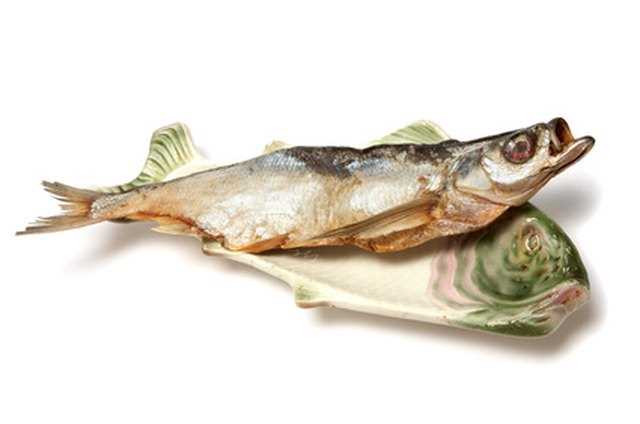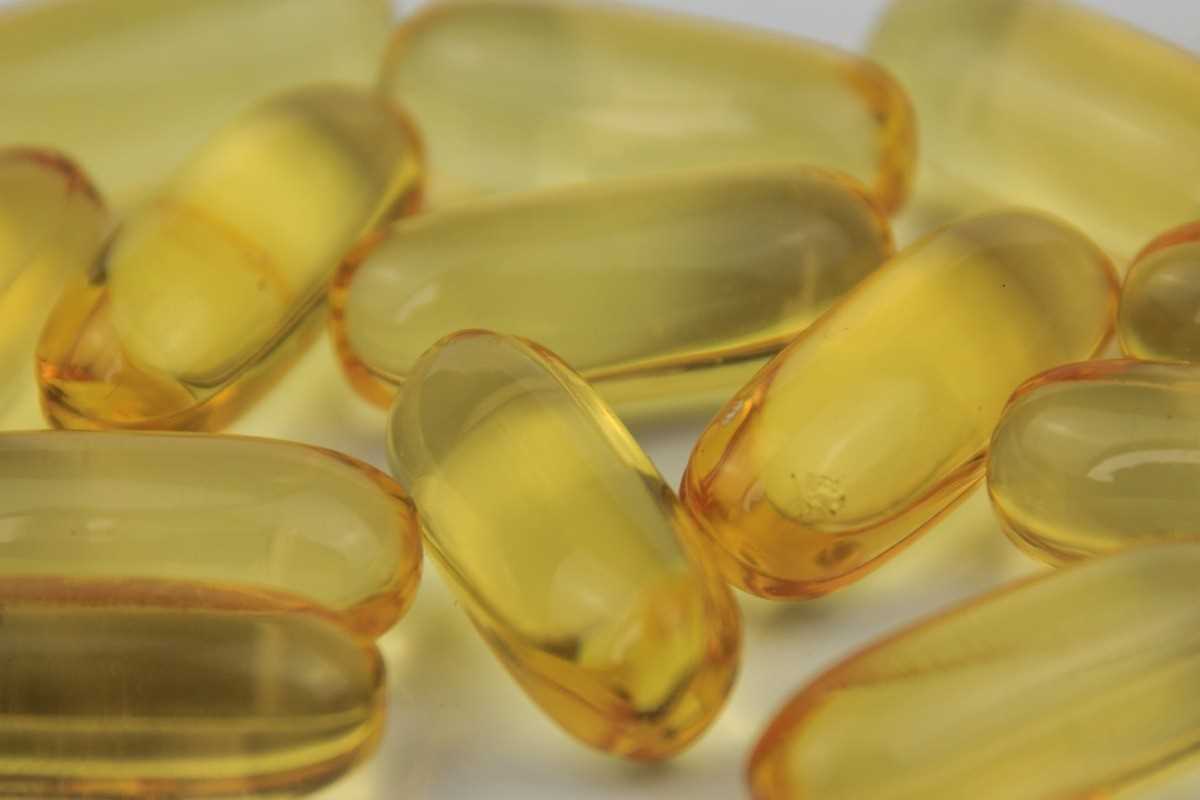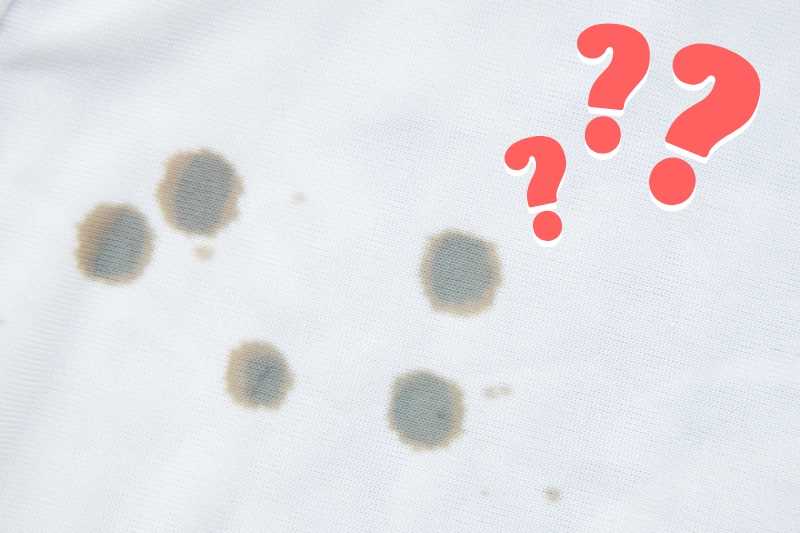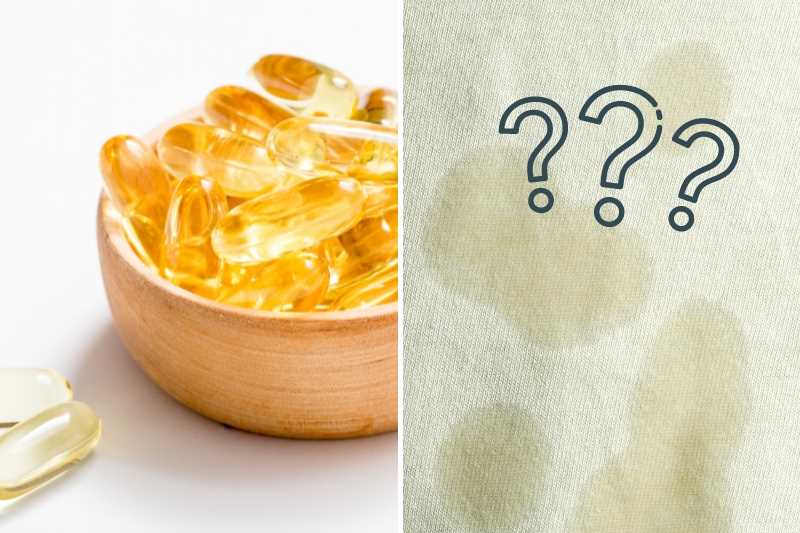




Accidentally spilling fish oil on your clothes can be a frustrating experience. The strong odour and greasy residue can make it difficult to remove the stain completely. However, with the right techniques and products, you can successfully remove fish oil stains from your clothes and restore them to their pre-stain condition.
Step 1: Act quickly
When a fish oil stain occurs, it’s important to act quickly to prevent the stain from setting into the fabric. Use a clean cloth or paper towel to blot the excess oil from the clothing. Avoid rubbing the stain, as this can push the oil deeper into the fabric and make it more difficult to remove.
Step 2: Pretreat the stain
Before washing the garment, pretreat the fish oil stain with a suitable stain remover. Apply a small amount of the stain remover directly to the stain and gently work it into the fabric using your fingers or a soft brush. Let the stain remover sit on the stain for a few minutes to penetrate the oil.
Step 3: Launder the garment
After pretreating the stain, wash the garment according to the care instructions on the label. Use the hottest water recommended for the fabric and add an enzyme-based laundry detergent. The enzymes will help break down the oil and remove it from the fabric.
Step 4: Check for any remaining stain
After washing, inspect the garment for any remaining fish oil stain. If the stain is still visible, repeat the pretreatment and laundering process. For stubborn stains, you may need to use a stronger stain remover or take the garment to a professional cleaner.
Step 5: Air dry the garment
Once the stain is completely removed, air dry the garment to avoid any heat from setting in any remaining oil or residue. Hang the garment on a drying rack or lay it flat on a clean towel.
Note: It’s important to carefully read and follow the instructions on the stain remover and laundry detergent products to ensure safe and effective stain removal.
By following these steps and being attentive to the stain, you can successfully remove fish oil stains from your clothes. Remember, the key is to act quickly and use the right products for your fabric. With a little effort, your clothes will be stain-free and ready to wear again.
Understanding Fish Oil Stains
Fish oil stains can be quite challenging to remove from clothes due to their oily nature. Whether you accidentally spilled fish oil on your favorite shirt or jacket, or you have noticed residual stains after handling fish, it’s important to take prompt action to prevent the stains from setting in.
What causes fish oil stains?

Fish oil stains are caused by the greasy substance found in fish. This oil contains fatty acids such as omega-3 and omega-6, which give fish its nutritional value. However, when this oil comes into contact with fabrics, it can leave behind unsightly stains that are difficult to remove.
Properties of fish oil stains
Fish oil stains are characterized by their greasiness and yellowish color. The greasy nature of the oil can cause it to spread quickly and penetrate deep into the fabric fibers, making it harder to remove. Additionally, fish oil stains can become rancid over time, resulting in an unpleasant odor.
Common sources of fish oil stains

Fish oil stains can occur in various scenarios, including:
- Accidental spills while cooking or eating fish
- Handling fish without gloves or proper protection
- Storing fish in close proximity to clothing
Preventing fish oil stains
Prevention is key when it comes to fish oil stains. To avoid encountering this problem, consider the following tips:
- Wear an apron or protective clothing while cooking or handling fish.
- Use gloves when handling fish to minimize contact with the oil.
- Avoid storing fish near fabrics or clothing items.
- Immediately treat any spills or stains to prevent them from setting.
Conclusion
Understanding the nature of fish oil stains is essential for effectively removing them from clothes. By being proactive and taking prompt action, you can prevent fish oil stains from ruining your favorite garments and keep your clothes looking clean and fresh.
Pre-Treating Fish Oil Stains

When it comes to removing fish oil stains from clothes, it’s important to act quickly and pre-treat the stain before laundering. Here are some effective methods for pre-treating fish oil stains:
- Blotting: Start by blotting the stain with a clean cloth, paper towel, or tissue. Be sure not to rub the stain, as it can further set into the fabric.
- Scraping: If the fish oil stain is still fresh and the oil hasn’t fully soaked into the fabric, you can gently scrape off any excess oil using a spoon or a dull knife. Be careful not to damage the fabric while doing this.
- Applying Dish Soap: Dish soap is a powerful degreaser that can effectively break down fish oil stains. Apply a small amount of liquid dish soap directly onto the stained area and gently massage it into the fabric. Let it sit for 5-10 minutes to allow the soap to penetrate the stain.
- Using a Stain Remover: If dish soap alone doesn’t completely lift the stain, you can try using a commercial stain remover. Apply a small amount of the stain remover onto the stain and lightly rub it in using your fingers or a clean cloth. Follow the instructions on the product for best results.
- Soaking in Vinegar: Vinegar is another effective household ingredient for removing fish oil stains. Mix equal parts of white vinegar and water in a bowl or basin, and then soak the stained clothing item in the solution for about 30 minutes. After soaking, proceed with laundering as usual.
Remember, it’s important to always check the care label on your clothing item before attempting any stain removal method. Some fabrics may require special care or professional cleaning.
Removing Fish Oil Stains from Different Fabrics
Fish oil stains can be quite stubborn and difficult to remove, especially from different types of fabrics. Here are some specific instructions on how to remove fish oil stains from various fabric types:
Cotton
- Blot the stained area with a paper towel or clean cloth to remove any excess fish oil.
- Apply a small amount of liquid dish soap directly to the stain and gently work it into the fabric using your fingers or a soft brush.
- Rinse the fabric with cold water to remove the soap and fish oil.
- If the stain persists, mix a solution of equal parts water and white vinegar and dab it onto the stain. Let it sit for a few minutes, then rinse with cold water.
- Wash the garment as usual, using the hottest water temperature allowed for the fabric.
- Inspect the fabric before drying. If the stain is still visible, repeat the steps above before placing it in the dryer.
Wool
Caution: Wool is a delicate fabric, and it is best to take it to a professional cleaner for removing fish oil stains.
Silk
- Gently blot the fish oil stain with a paper towel or clean cloth to remove any excess oil.
- Sprinkle cornstarch or talcum powder over the stain to absorb the oil. Let it sit for at least 30 minutes.
- Using a soft brush, gently brush off the powder.
- If the stain remains, mix a solution of equal parts water and white vinegar and dab it onto the stain. Let it sit for a few minutes.
- Rinse the fabric with cool water to remove the vinegar solution.
- Hand wash the garment with mild detergent and cool water, gently rubbing the fabric together.
- Rinse thoroughly and hang to dry.
Polyester
- Blot the stained area with a paper towel or clean cloth to remove any excess fish oil.
- Pretreat the stain with a laundry stain remover or a small amount of liquid dish soap.
- Allow the stain remover to sit on the fabric for a few minutes.
- Wash the garment in the hottest water temperature recommended for polyester.
- Check the stain before drying. If it is still visible, repeat the pretreatment step and wash again.
- Dry the garment as usual.
Leather
Caution: Leather is a delicate material and can be damaged by excessive moisture or harsh cleaners. It is best to take leather items to a professional cleaner for stain removal.
Using Household Products as Stain Removers

When it comes to removing fish oil stains from clothes, you don’t always need to rely on expensive stain removers. Many household products can be just as effective in tackling these stubborn stains. Here are some common items you can use as stain removers:
Vinegar
- Mix equal parts of vinegar and water.
- Apply the solution directly to the stain, making sure to saturate it.
- Gently rub the stain with a clean cloth or sponge.
- Let the vinegar solution sit on the stain for about 15 minutes.
- Rinse the area with cold water.
- Check if the stain is still visible, and repeat the process if necessary.
Lemon Juice

- Squeeze fresh lemon juice onto the stain.
- Gently rub the lemon juice into the stain using a clean cloth or sponge.
- Let the lemon juice sit on the stain for about 15 minutes.
- Rinse the area with cold water.
- Check if the stain is still visible, and repeat the process if necessary.
Baking Soda
- Make a paste by mixing baking soda with a small amount of water.
- Apply the paste to the stain and rub it in gently.
- Let the baking soda paste sit on the stain for about 30 minutes.
- Rinse the area with cold water.
- Check if the stain is still visible, and repeat the process if necessary.
Dish Soap

- Apply a small amount of dish soap directly to the stain.
- Gently rub the dish soap into the stain using a clean cloth or sponge.
- Let the dish soap sit on the stain for about 10 minutes.
- Rinse the area with cold water.
- Check if the stain is still visible, and repeat the process if necessary.
Remember to always check the care label on your clothes before using any household products as stain removers. Some fabrics may require special treatment or professional cleaning.
Professional Stain Removal Techniques

When it comes to removing fish oil stains from clothes, there are various professional stain removal techniques you can try. These methods have been developed by experts in the field and are known to be effective in tackling stubborn stains. Here are a few techniques you can use:
1. Pre-treating the Stain
Before you start the actual stain removal process, it’s important to pre-treat the affected area. Follow these steps:
- Gently blot the stain with a clean cloth or paper towel to remove any excess oil. Avoid rubbing the stain, as it can spread the oil and make the stain worse.
- Apply a small amount of liquid dish soap directly to the stain. Let it sit for a few minutes to penetrate the fabric.
- Using a soft brush, gently scrub the stained area in a circular motion. Be careful not to be too rough, as it can damage the fabric.
2. Using an Enzyme-based Laundry Detergent

An enzyme-based laundry detergent can be effective in breaking down and removing fish oil stains. Follow these steps:
- Apply a small amount of the enzyme-based laundry detergent directly to the stain.
- Gently rub the detergent into the fabric using a soft brush or your fingers.
- Let the garment sit for at least 30 minutes to allow the enzymes to work on the stain.
- Wash the garment as usual, following the manufacturer’s instructions.
3. Dry Cleaning

If the fish oil stain is particularly difficult to remove, you may want to consider taking the garment to a professional dry cleaner. Dry cleaning can be effective in removing tough stains, including fish oil stains, and it is a good option for delicate fabrics that may be damaged by water-based stain removal methods. Be sure to inform the dry cleaner about the nature of the stain, so they can use appropriate techniques and solvents.
Remember, it’s always best to treat stains as soon as possible to increase the chances of successful removal. If the stain persists after trying these professional stain removal techniques, it’s recommended to seek professional help or consult a stain removal expert.
FAQ
What is the best way to remove fish oil stains from clothes?
One effective method for removing fish oil stains from clothes is to blot the stain with a paper towel to remove any excess oil, then apply a pre-treatment stain remover to the stain. Let the stain remover sit for a few minutes before laundering the garment as usual.
Can I use dish soap to remove fish oil stains from clothes?
Yes, dish soap can be an effective option for removing fish oil stains from clothes. Apply a small amount of dish soap directly to the stain, then gently rub the fabric together to work the soap into the stain. Rinse the garment thoroughly and launder as usual.
Is it possible to remove old fish oil stains from clothes?
Yes, it is possible to remove old fish oil stains from clothes, although it may require a bit more effort. Start by blotting the stain with a paper towel to remove any excess oil, then apply a pre-treatment stain remover and let it sit for an extended period of time, such as overnight. Launder the garment as usual, and repeat the process if necessary.
Are there any home remedies for removing fish oil stains from clothes?
Yes, there are a few home remedies that can be effective for removing fish oil stains from clothes. One option is to apply a paste made of baking soda and water to the stain, let it sit for a few minutes, then rinse and launder as usual. Another option is to mix equal parts vinegar and water, and use a sponge or cloth to dab the mixture onto the stain before laundering.
What should I do if I accidentally put a stained garment in the dryer?
If you accidentally put a stained garment in the dryer, it is important to avoid applying heat, as this can set the stain. Instead, remove the garment from the dryer and treat the stain using one of the methods mentioned earlier. Once the stain has been treated, launder the garment as usual.
What are fish oil stains and how do they happen?
Fish oil stains are oily spots caused by fish oil coming into contact with fabric. They happen when fish oil is spilled or dripped onto clothes, leaving a greasy mark.













